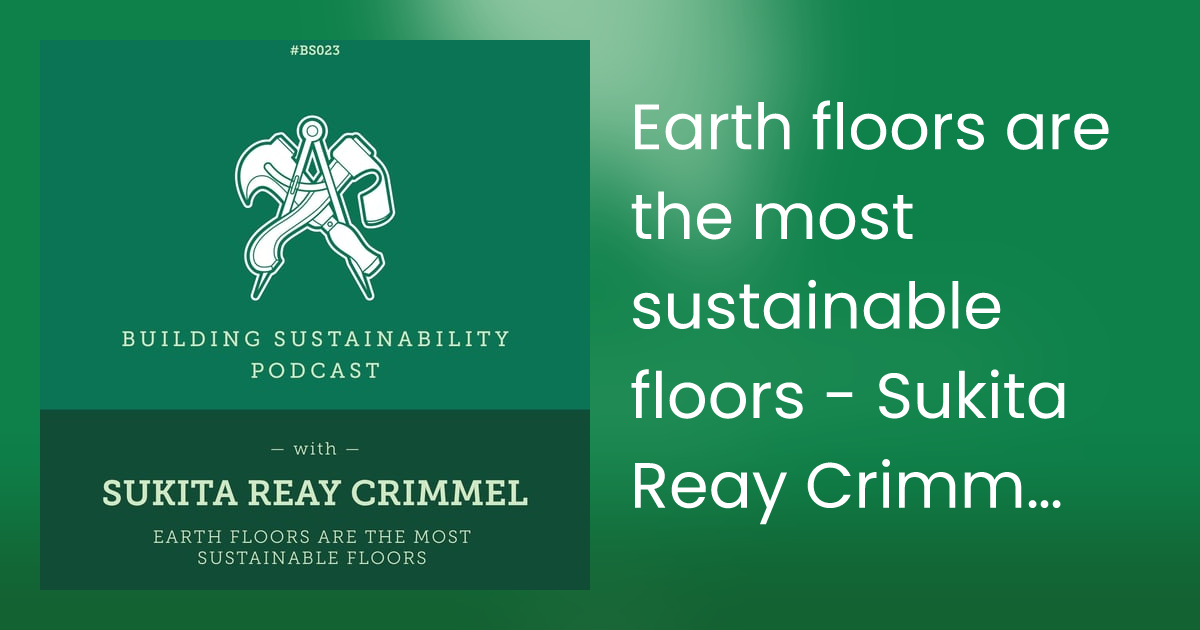- Tiny Farm Friends
- Posts
- Would You Walk Barefoot on This Floor?
Would You Walk Barefoot on This Floor?
Tiny Insights for building naturally, building beautifully.

No.093 — Read old posts on Tinyfarmlab.com
Reading Time 4 minutes
“So you used cement, right?”
Most people assume our earthen floor is polished concrete when they first see it.
But the truth is:
An earthen floor is made from clay, sand, and fibre. No cement. No synthetic sealers. Just earth. Finished with natural oils that make it durable, waterproof, and beautiful.

From African huts to Japanese tea rooms, from Native American pueblos to Indian village homes, people have walked on, slept on, and danced on earth floors for thousands of years.
Across continents, cultures, and climates, the earth remained a constant.
People didn’t need to ship in exotic materials.
They simply looked down and found what they needed beneath their feet.
In India, rural homes often had “lipayi” floors — a mix of mud and cow dung, applied by hand and polished with love.
These weren’t just functional.
They were sacred, often renewed before festivals and rituals.
They absorbed moisture,
stayed cool in summers,
and radiated warmth in winters.
And most importantly,
they connected people to the ground beneath them.
In Japan, tataki flooring used lime, earth, and natural binders for smooth, durable floors in traditional houses.
In the American Southwest, indigenous builders perfected adobe floors, sealed with natural oils — a technique revived today by modern natural builders like Sukita Reay Crimmel, author of the book Earthen Floors.
Sukita often says that the earth under our feet can become the floor. You just need to know how to work with it.
Here’s what makes earthen floors special:
Thermal Comfort
Earthen floors have excellent thermal mass, which means they absorb heat during the day and release it slowly at night, helping naturally regulate indoor temperatures.
Soft but Strong
They’re firm enough to place heavy furniture on, yet softer on the joints than concrete or tile. Walking barefoot feels grounded and gentle.
Seamless Finish
Unlike tiles or planks, earthen floors are seamless.
No grout lines, no joints, just smooth, flowing continuity.
Healthy & Non-Toxic
Free from VOCs (volatile organic compounds), adhesives, or industrial chemicals. When sealed with natural oils like linseed or tung oil, they’re water-resistant and easy to maintain.
Repairable & Renewable
Scratches? Cracks? No need to replace the whole floor. Just moisten, re-trowel, and reseal.
How to Build an Earthen Floor
1. Prepare the Subfloor
Excavate ~8–12" to solid ground.
Remove organic matter.
Compact it thoroughly — damp, not wet — until a tamper leaves no mark.
2. Add Gravel Layer
4" of clean gravel or drain rock (¾–1.5") for drainage.
Tamp flat and level.
3. Base Layer (Structural Floor)
Mix: coarse gravel, sand, sticky soil, and lots of long straw.
Lay 2x4 screed boards and fill between them.
Screed flat, leave rough for grip.
Let dry completely — this may take several days to weeks.

4. Leveling Layer
Smoother mix (no big gravel).
Add chopped straw or dung for strength if needed.
Wet the base layer before applying.
Lay 1–1½" thick. Screed and trowel flat.
Keep it rough for the final coat to bond.
5. Finish Layer
Thin (½–¾") smooth mix like cake batter.
Fine clay, fine sand, and sifted fiber or dung.
Trowel carefully for a silky, even surface.
Let dry completely before stepping on it.

6. Seal with Oils
Once bone dry, apply:
Boiled linseed oil, in 4+ coats, gradually increasing thinner ratio.
Warm the oil/floor for deeper penetration.
We used 7 coats for extra durability.
Optional: Add beeswax + linseed oil for extra shine & water resistance.
Tips:
Don’t build your finished floor until after cob walls and rough plastering are done. Construction mess will damage a finished surface.
Always test finishes on a 3x3 ft sample before doing your full floor.
Too much oil can keep your floor sticky for days, don’t rush in the layers and wait for the floor to completely dry to wax it.
People have even done earthen floors above concrete floors.
They do take time.
They need patience and the right ratios.
But what you get in return is a floor that feels like it belongs.
Sit,
lie down,
stretch, do yoga,
or play with children on.
Love,
Raghav and Ansh
PS: Check out our latest post on LinkedIn where we share our thoughts on perks of being a natural builder.
What you can watch -
What you can listen to - Earth floors are the most sustainable floors - Sukita Reay Crimmel - BS023
What You Can Read - Earthen Floors
Your attention is precious. Thank you for reading.
If you found value in this newsletter, please consider sharing it with a friend.
Tiny Farm Friends Newsletter.
Every Sunday, we share tiny valuable lessons to help you transition to the countryside and build naturally.

